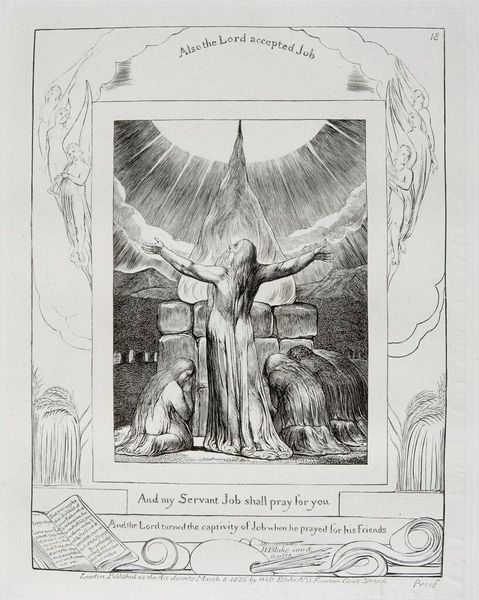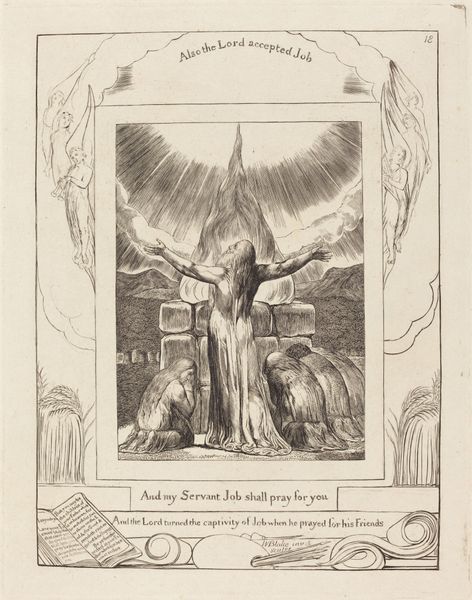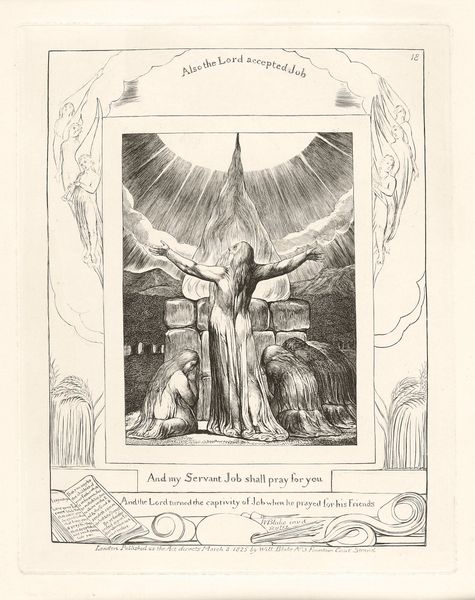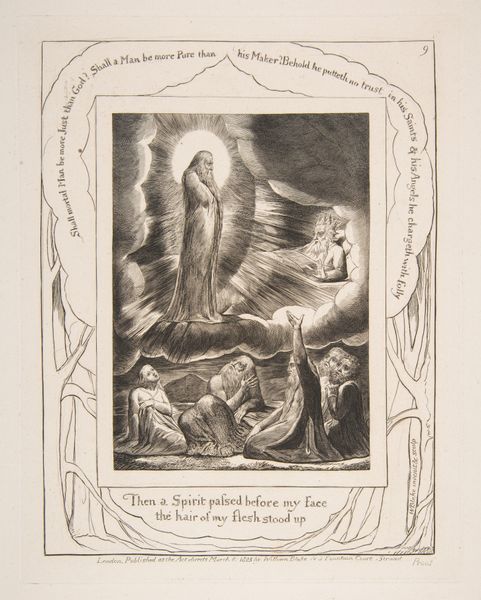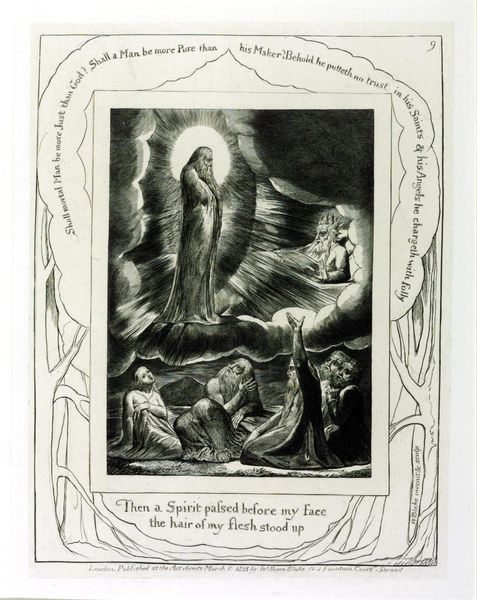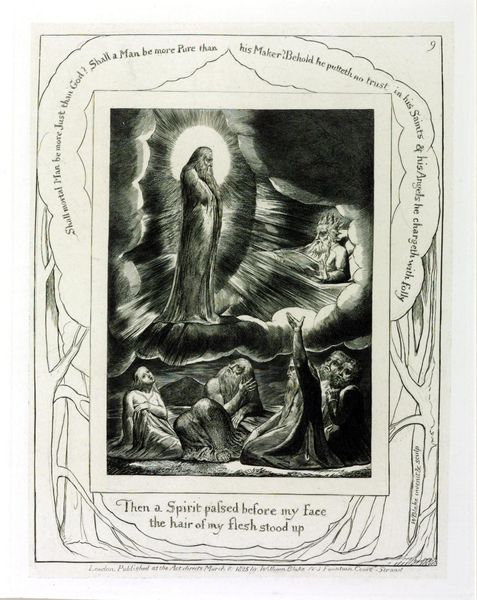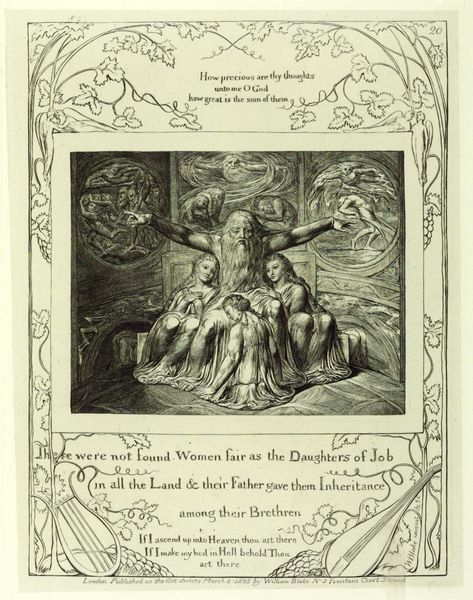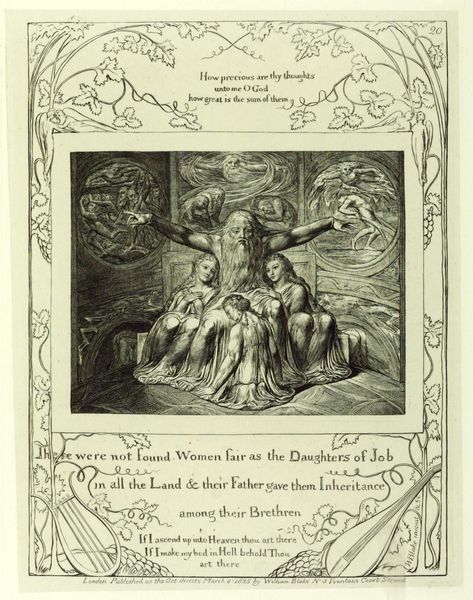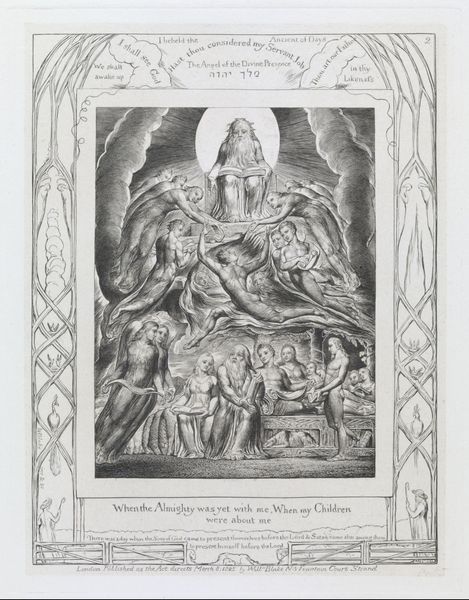
Dimensions: image: 198 x 150 mm
Copyright: CC-BY-NC-ND 4.0 DEED, Photo: Tate
Editor: So, this is William Blake's "Job's Sacrifice," an engraving. It feels incredibly dramatic, almost theatrical. What do you see in this piece that I might be missing? Curator: Blake, he's such a mystic, isn't he? I see a profound exploration of faith, of suffering, of redemption. Job, arms raised, is he surrendering or appealing? Look at those figures around him, engulfed in shadows – are they comfort or accusation? It's a divine puzzle, isn't it? Editor: A puzzle, definitely. It makes me wonder, is the divine accepting Job, or is Job finally accepting the divine? Curator: Precisely! It's that dance, that tension, that makes Blake so endlessly fascinating. We're left pondering, and perhaps that's the point.
Comments
Join the conversation
Join millions of artists and users on Artera today and experience the ultimate creative platform.
tate 6 months ago
⋮
This is plate 18 of the set of twenty-one engraved illustrations to the 'Book of Job'. They were commissioned by Blake's friend, the artist John Linnell (1792-1882) and Blake worked on them from 1823 to 1825. We know from Linnell that the plates for this series were 'cut with the graver entirely on copper without the aid of [etching acid]'. The effects of darkness and light achieved by this method, combined with the recurring energy of pure line, are always appropriate to the subject. In this sense of unity, the 'Job' series ranks among Blake's supreme achievements as a printmaker. The burin and the palette seen in the margin next to an open bible link the artist with Christ's work as a preacher. Gallery label, August 2004

